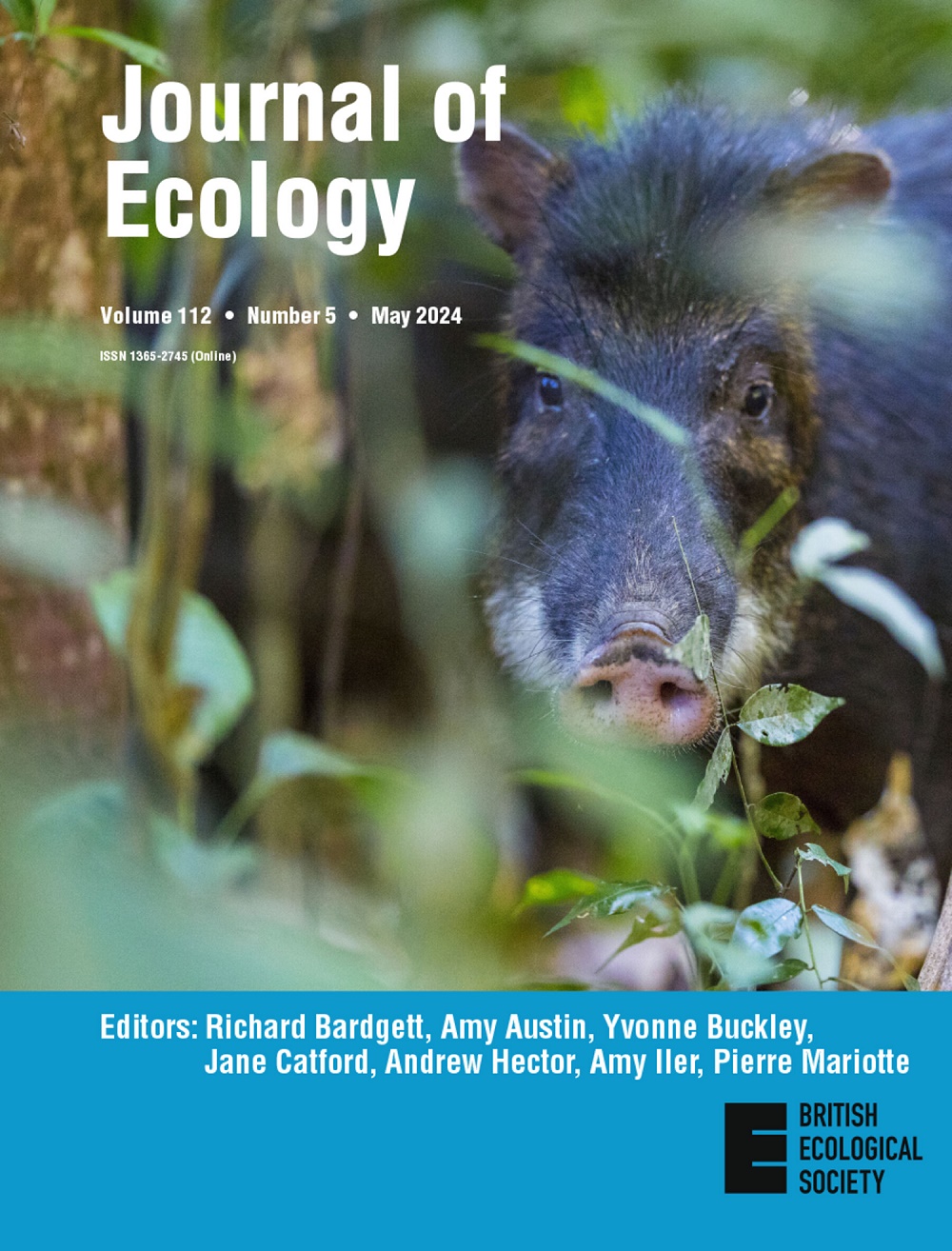安第斯山脉至亚马逊河海拔梯度的木材密度变化
IF 5.6
1区 环境科学与生态学
Q1 ECOLOGY
引用次数: 0
摘要
了解功能性状与物种多样性和生态系统特性的关系是生态学的中心目标。木材密度是一个综合了植物形态和功能许多方面的特性,并且在物种之间具有高度的差异性。以前对木材密度在海拔梯度上的研究是基于有限的采样,并报告了随着海拔的增加而下降,尽管这种简单的模式仍然未知,更不用说其潜在的功能和进化关系了。在这里,我们使用世界上最长、物种最多的海拔梯度之一,从安第斯树线延伸到亚马逊盆地,来测试海拔、物种组成、系统发育亲和和森林结构在多大程度上决定了木材密度的变化。利用野外采集的木材样本和全球数据库,我们在垂直梯度为3500米的41个(47.5公顷)成熟林地中分配了1231种木材和31330根树干的木材密度。结果表明,以丰度、基面积和种数加权的平均木材密度变化很大,但从低海拔到中海拔呈下降趋势,从中海拔到林木线呈上升趋势。由于这种非线性,安第斯林木线的森林比亚马逊低地的森林密度更高。我们观察到,在持续云形成的下限(云底),木材密度发生了突变,在那里发现了最低的木材密度值。木材密度的下降可归因于生命形式的重大转变,在中等海拔地区有大量的蕨类植物,山体滑坡和干扰的可能性更高,有利于与低木材密度相关的一系列特征,如较软的木材和较高的弹性。物种更替解释了大部分跨梯度的种间变化,海拔对木材密度的种内变化没有一致的影响。总之,逐渐的组成变化和非双树生命形式(如乔木蕨类和棕榈树)重要性的急剧局部变化,定义了森林水平碳密度的模式,木材密度本身控制着安第斯山脉到亚马逊河流域海拔梯度上的生态系统特性,如碳通量。本文章由计算机程序翻译,如有差异,请以英文原文为准。




Wood density variation across an Andes-to-Amazon elevational gradient
求助全文
通过发布文献求助,成功后即可免费获取论文全文。
去求助
来源期刊

Journal of Ecology
环境科学-生态学
CiteScore
10.90
自引率
5.50%
发文量
207
审稿时长
3.0 months
期刊介绍:
Journal of Ecology publishes original research papers on all aspects of the ecology of plants (including algae), in both aquatic and terrestrial ecosystems. We do not publish papers concerned solely with cultivated plants and agricultural ecosystems. Studies of plant communities, populations or individual species are accepted, as well as studies of the interactions between plants and animals, fungi or bacteria, providing they focus on the ecology of the plants.
We aim to bring important work using any ecological approach (including molecular techniques) to a wide international audience and therefore only publish papers with strong and ecological messages that advance our understanding of ecological principles.
 求助内容:
求助内容: 应助结果提醒方式:
应助结果提醒方式:


